So starts Bob Keller’s review of Lionel’s no. 2219W Lackawanna “Thunderbird” set, one of the new
“Lionel Postwar Authentics – Conventional Classics.”
Older trains (postwar or even prewar) are simple, rugged, and impressively reliable. (“Sat in a box for 50 years and still runs” is a pretty common story we hear at Classic Toy Trains.) These trains tend to be unapologetically toy-like, and they pack a powerful wallop of nostalgia. A few times in the past, Lionel has dabbled in the repro market, targeting the deep-pocket end of the hobby. That has changed.
Lionel’s new product line has a somewhat cumbersome name – “Lionel Postwar Authentics – Conventional Classics” – but the goal is simple. To offer reproductions of venerable postwar trains in a form as close to their original size, shape, and composition as possible, down to the wrapping paper.
Oh, and did I mention that these trains aren’t being sold as premium collectibles, but instead, are priced low enough that even an ardent collector can run them with a clear conscience?
Up for consideration today is the no. 2219W “Thunderbird” set, packing a Fairbanks-Morse Train Master and a freight train to pull. With a list price of $414, that is less than the $469 price I paid back in 1994 for a no. 18307 Pennsylvania Train Master alone! It’s like an ad on TV. “Buy the locomotive and get the train for free.”
The O gauge outfit includes a no. 2321 Lackawanna Train Master diesel, a Sunoco three-dome tank car, a New York Central gondola, a Minneapolis & St. Louis boxcar, a Lehigh Valley hopper car, and a Pennsylvania caboose. No track or power supply is included.
What’s in the box
Without question, there is something intoxicating about orange and blue on a box. The pull of nostalgia, of a train world long gone, is mighty powerful. I confess to having purchased an empty postwar Lionel box or two – but only for items that I already possessed.
The tug of nostalgia for the boxes is a key selling point of this outfit, from a “just like the original” perspective. This is as close to perfect as it gets – even considering current legal requirements for package labeling.
Of course, there are some modern elements, such as Styrofoam inserts to protect the boxes inside the set box and clear plastic to protect the paint from friction damage caused by the wrapping paper. Otherwise, this is straightforward and seems like the real deal.
To see a series of images we shot while unpacking the set, go to the “Unwrapped: Conventional Classic postwar-style trains by Lionel” link below.
The locomotive is the famed Train Master, and the rolling stock is the pride of a vintage catalog.
The diesel is a solid piece of work. The tooling is pretty clean and crisp. The detail is postwar-style, which, to clarify for operators with no experience with vintage trains, means that many, if not all, detail points are present. These details are just not in a style typical of a modern model.
For example, on today’s locomotives door hinges and latches would be a raised-relief detail point. The vintage example has the door outline, hinge, and latch as an indentation into the plastic. The cast-in screens and louvers are similar to modern counterparts, but thicker and less finely executed.
The see-through “screens” are a cross pattern of thick plastic, rather than a fine wire or other representation. Not bad, mind you, just different from modern practice, and the model is certainly authentic in the realm of postwar icons.
Where the handrails on a modern locomotive are usually painted and may be shaped to look like handrails, these are pretty much “paperclip” wires.
Add-on details are sparse: The aforementioned handrails, horns, plastic panes in the windows, and headlight/number boards. The decks along the car body are not cast into the model, but are silver and are part of the handrail assembly.
Application of the paint scheme is excellent. Edges are razor sharp, and we spotted no areas of overspray. Graphics, including the numbers, “Built by Lionel,” and Fairbanks-Morse emblem, were cleanly applied.
The train is made up of five cars: a boxcar, a gondola, a hopper, a tank car, and a caboose. If the tooling isn’t the original postwar tooling, it is based on the original tooling because it looked spot-on to me. I didn’t notice any significant evidence of the tooling being too tired (such as faded detail).
The boxcar is a no. 6464-50 Minneapolis & St. Louis. The boxcar has a plastic shell with a metal frame and is painted brown with white lettering. Details are all cast on, except for the add-on brake wheel and sliding door and door frame.
The gondola is a no. 6462-25 New York Central car. It consists of a single-piece plastic casting painted green with white lettering. Details are cast in except for the brake wheel. The car carries a load of wooden barrels that I thought were pretty neat – no pretense at realism – and they reminded me of old-time thread spools.
The hopper is a gray no. 6456 Lehigh Valley car. It has a very nice detachable coal load, so you can run it “full” or insert your own cargo. Save for the coal load and brake wheel, the details are all cast in.
The tank car is a no. 6415 Sunoco three-dome model. The car body is plastic, with a metal handrail running around the body and steps leading upward toward the center dome. The frame is plastic and has some undercarriage detail. An add-on brake wheel is mounted on the frame. I think this is the nicest car in the outfit, but I have a soft spot for postwar tankers.
The caboose is the Pennsylvania RR N5c-class porthole caboose. It carries the Pennsy road name and the number “536417,” with “New York Zone” just below the number. The car has clear plastic in the windows. The brake wheel is located on the end assembly with the plastic ladder and roof supports. The car has an interior light, though, like the original, it lacks interior detailing.
The rolling stock isn’t especially exciting. Let’s be honest now – the real, vintage cars have been on the market for 50 years and, with the possible exception of the three-dome tanker, they’re a pretty unremarkable bunch. The graphic designs of the originals were plain, and the modern copies duplicate that. Nevertheless, Lionel does a nice job re-creating them.
The cars are well constructed and have the intangible “feel” of the postwar cars. Don’t know quite what I mean? Take a car from a recent starter set and hold it in one hand. Now pick up a car from the Thunderbird set – it’s noticeably heavier and more solidly built than the typical new starter set car.
Sure, it is totally subjective, but to me a modern starter set car is a pretty unexciting piece of rolling stock. The cars in the Thunderbird set have metal trucks and couplers, unlike the plastic parts of some sets. These Lionel repro cars don’t have that cheap vibe.
The magnetic couplers will operate “old school,” with the uncoupler track section. This means that they won’t operate with Lionel’s TrainMaster or Legacy command-control systems.
The painting and decoration are workmanlike. Except for a spot or two on some truck frames that appeared to be touch-up paint, the cars were up to the standards of modern production.
Of special note was the outstanding graphic application on the tanker. The printing, Sunoco emblem, and “Built by Lionel” never looked better.
Overall, the cars struck me as being very well assembled and they certainly functioned perfectly well.
On the test track
The postwar Train Master diesel is, in my book, the king of pulling power for postwar locomotion. So how does it stack up? Pretty darn well.
Former CTT columnist Carl Johnson loaned us his postwar 2321 so that we could do a comparison with the hood off. Carl’s version has the maroon top and today’s product has the gray top.
Time did not stand still, and you won’t find a reproduction of the 50-year old guts of a Train Master. You’ll find an electronic reverse, a digital horn and speaker (the sounds are prototypical), and Lionel has slightly repositioned the headlight bulb mounts inside.
But what we really want is the pulling power of those big old Lionel motors. Sure enough, we were delighted to see two big, bright, and shiny new Pullmor motors under the hood.
The model has two power pickup rollers, roughly seven inches apart. The motors functioned well. Only two axles of each truck are powered, and the leading wheelset (closest to the forward, or rear end of the pilot, has a traction tire). The model is also equipped with Magne-Traction and traction tires.
Our sample had a low-speed average of 11 scale miles per hour and a high-speed average of 116 scale miles per hour. Drawbar pull was reasonable but not spectacular at 1 pound, 8 ounces.
The digital horn sounded pretty good to me, far better than the old doorbell buzzer. The bell was okay, but it was a bit quirky starting and stopping.
The wheel placement in the trucks is a bit odd. Look at a modern Train Master and check the trucks. You’ll find two flanged wheelsets and an un-flanged (blank) wheel set (to allow the truck wider swing on tighter track). These are normally flanged in the front and flangeless at the rear of the truck.
The repro Train Master has the wheels placed flange-blank-flange. Though we didn’t have any trouble operating on O-36 diameter curved track, it did bounce slightly running through the curving route of FasTrack O-36 switches. However, we had only one derailment (coming out of the switch’s curve and leading into another curve at high speed). On close inspection, it appeared that the forward axle wheel flanges on the lead truck were striking the plastic guard rails on one side of the FasTrack switch frogs. Otherwise, the engine was a smooth runner, and those twin Pullmors really cranked out that good-old ozone smell.
The Thunderbird sets gets high points for re-creating a vintage train set and a hearty round of applause for not trying to break the bank in the process. I hope that Lionel continues with this low-price, solid-quality approach to O gauge trains.
To learn more about the original Thunderbird outfit from 1954, click on the “Lionel’s 1954 no. 2219W Thunderbird Train Master set” link below. There, you’ll find Senior Editor Roger Carp’s assessment of the original set and his thoughts on why Lionel reproduced it for the Conventional Classics series.
Price: $414.99 (no. 31776-1)
Features: Two Pullmor motors, magnetic couplers, electronic horn, traction tires on locomotive; set includes five cars
Staff comments: A big diesel with plenty of value for the money. I derailed it while attempting a reverse curve at a scale 100 mph. Pretty much launched it right off the rails and didn’t damage a thing. Solid? Oh yeah. – Carl Swanson





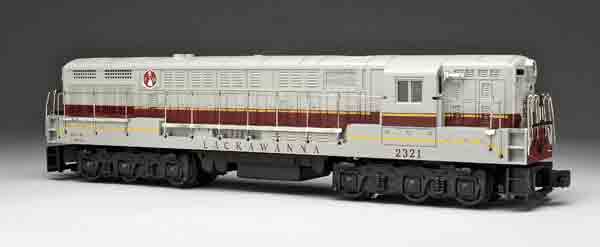

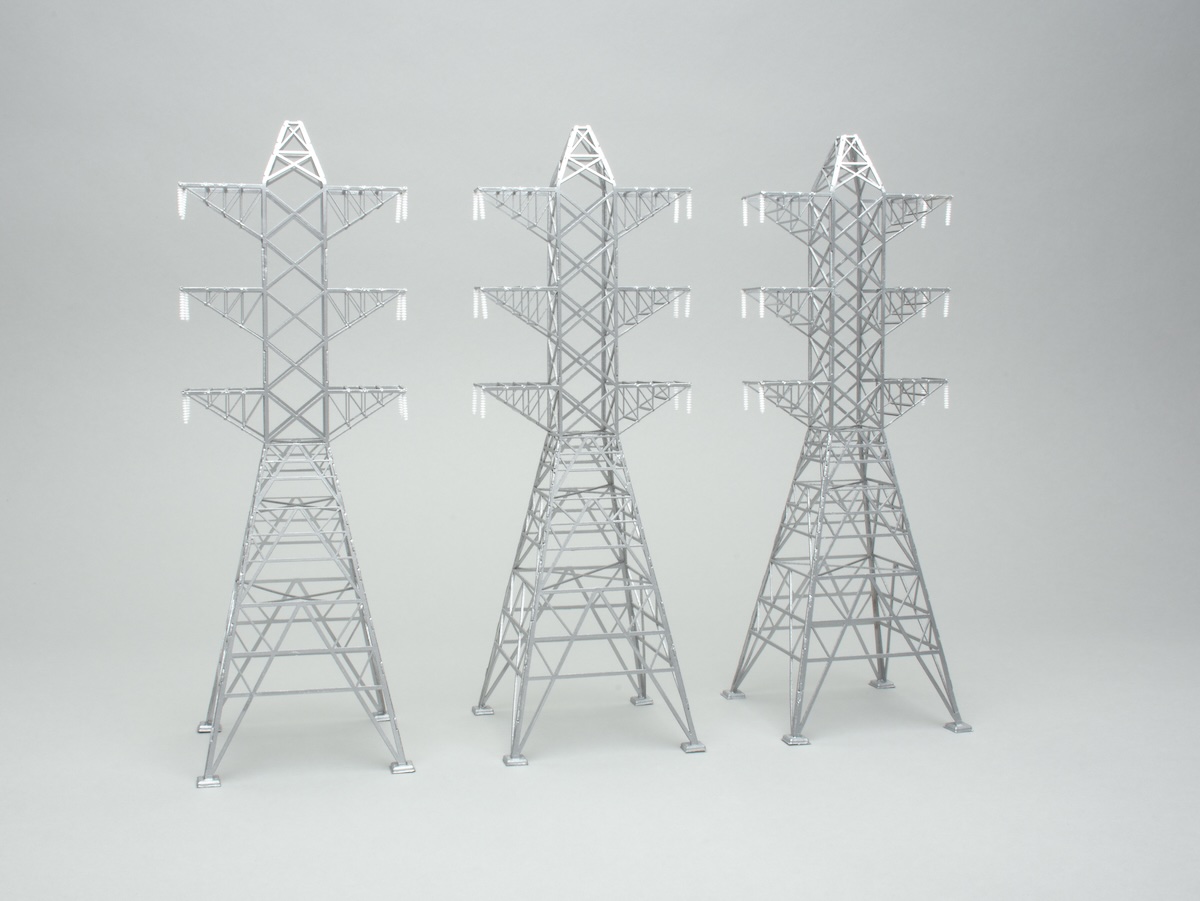
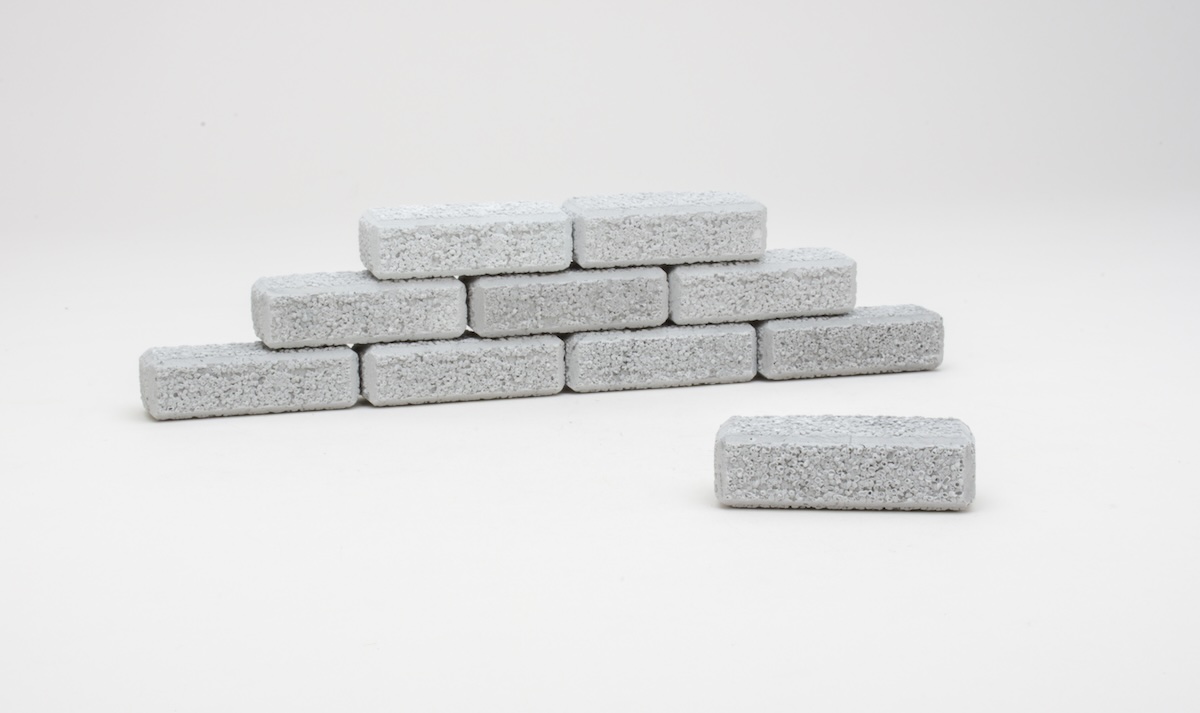
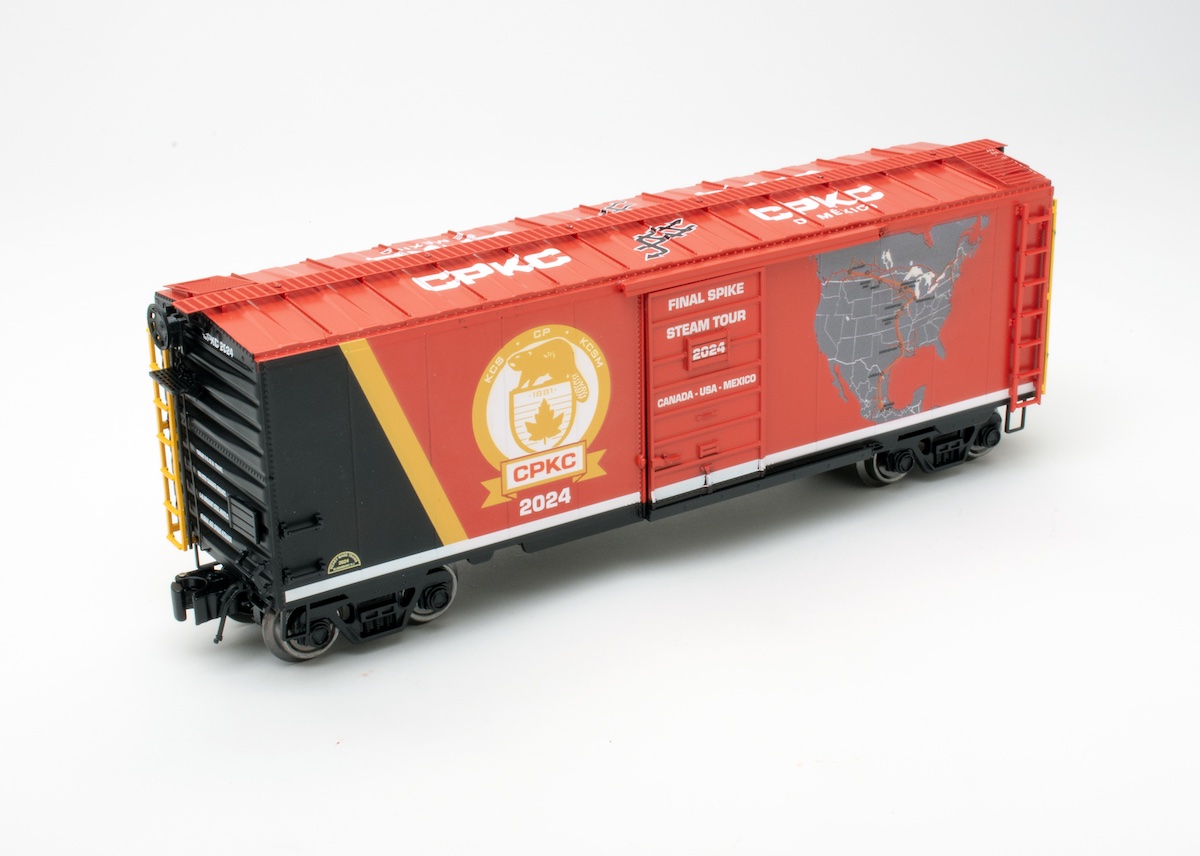
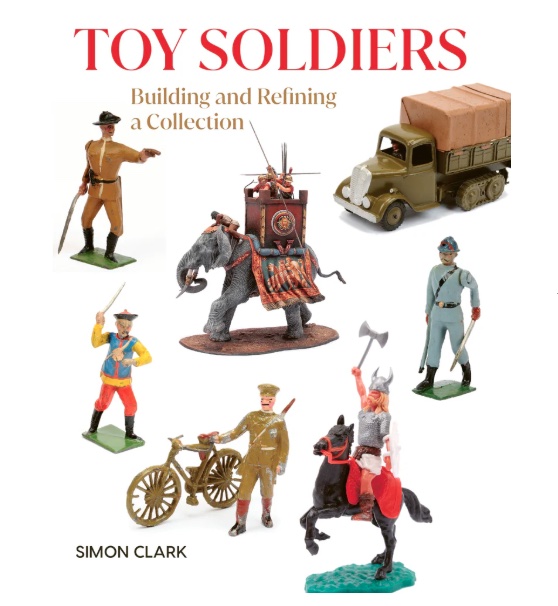




I've bought ALL of the currently available Conventional Classics and I can say, without a doubt, this series is SENSATIONAL! I've been waiting 39 years for Lionel to reproduce their classic sets exactly as these sets are being done now. I've purchased a great deal of Postwar Celebration items, but they were not as faithful to the originals as these. I've always loved the ORIGINAL, non-sprung, die-cast Lionel trucks and they are here. I'm glad I don't have to pay extra for TMCC ability in these sets/locos. What a delight to be able to open and unpack a Lionel set pretty close to how someone in the 1950's would have!
I bought the set and found it to be in perfect condition, paint and metal railings.
I don't understand why LIONEL doesn't poll your magazine and other O gauge magazine's about what classics the consumers would like to see built first.I have the Thunderbird set and like your
report on this set can't wait for more of this type offering from
LIONEL.The average age of the post war collector is getting on in age and we need Lionel to step up the pace but they have to
make better selections than the Union pacific switcher set and Budd cars.If i had to choose between having a CTT subscription
or driving my car to work I am getting my walking shoes on.
I would like to see these sets made with mechanical e-units and real whistle tenders with open frame motors and dc relays so it would sound and act more like the originals, they should give you the option like Mike did with his tinplate repros to go without the electronics!
I also have this current set, and I feel like Bob has captured everything about it that I noticed. Especially the weight of the cars. You really "feel" the quality of the product. I'm looking to get a few more of the Conventional Classic sets.
From what I know the Lionel Fairbanks Morse engine, any roadname, Post war and/or present made, is a thing of beauty, as well as, reliability.
But, I too would like to know why wasn't the roof painted maroon, as the prototype was and size made in scale proportions, with accurate detailing?
Maybe, it would cost more and take up more space, requiring wide radious curve track, but then again I like more realism, even if scaled down in size.
Well done review of this set. While the american price seems reasonable even at discounted prices it is almost double the price in terms of the canadian dollar with the exchange rate.
I was going to purchase the set but it is too costly.
Lionel should have come up with better sets for release in their conventional classic line & at least included some track, & or a transformer to intice the consumer to purchase.
I hope that you review more of these sets when they become available
I purchased the GG-1 Set along with the Virginian Train Master FM first. I was so impressed with them I also ordered the FM Thunderbird set also. It was just like I was back in the 1950's & Santa finally brought me some of the trains I couldn't afford back then. The Thunderbird set is well done, & perfectly captures the orginial concept at an affordable price. I think Lionel hit the nail on the head with this new series. I'm looking forward to future releases.
Wonderful set.When I opened the boxes it was like I was back in the fifties again. Don't I wish I could be back there! I can't wait for the other releases.
I'm curious as to why Lionel didn't paint the roof Maroon?
I have the GG1 set with the madison passenger cars. It is a very well made,good running set. I am looking forward to future releases in this series.
A very nice set at a reasonable price. More please , (NYC) hint, hint.
Very well done
Interesting set. I have the original and am very curious to see this set up close. However, I'm baffled why Lionel decided to put magne traction AND rubber tires on the engine. Doesn't make any sense. Also, why have the flangeless wheel be in the middle rather than the end of the trucks as on the original? For those detail oriented, like me, also note the barrels are not the type that originally came with this set, and the gondola markings are incorrect – it should not have the line above the NYC letters, as this set does. You can see that me clearly in the Bob Keller video. Also, is the lettering on the hopper red or black? Hard to tell in the video. The one big plus I see is keeping the train set simple and having a lower price. That may entice postwar enthusiasts like me into buying "modern" trains – and may make quality (not "cheapie") Lionel trains accessible to the average buyer.
Congratulations to Lionel for correcting a detraction from the origional Trainmaster. The flangless wheel that hangs way out on the turns. With the flangless wheel on the center axle it is not noticed. K-Line used this newer truck on its Trainmaster and maybe Lionel has used that part.
Congratulation to Lionel! I like the idea and would like to own one myself.